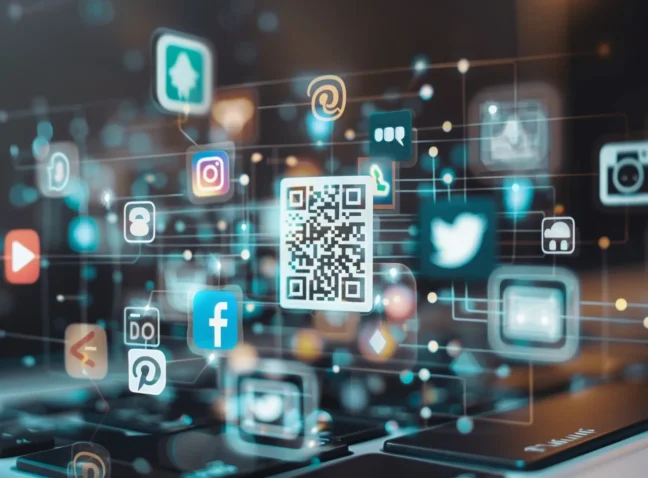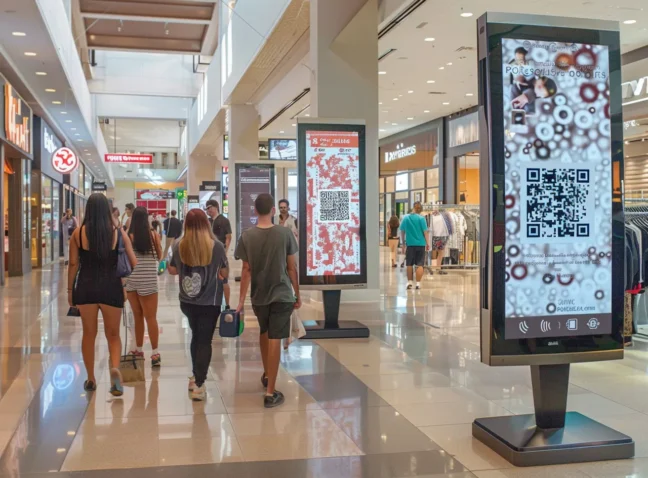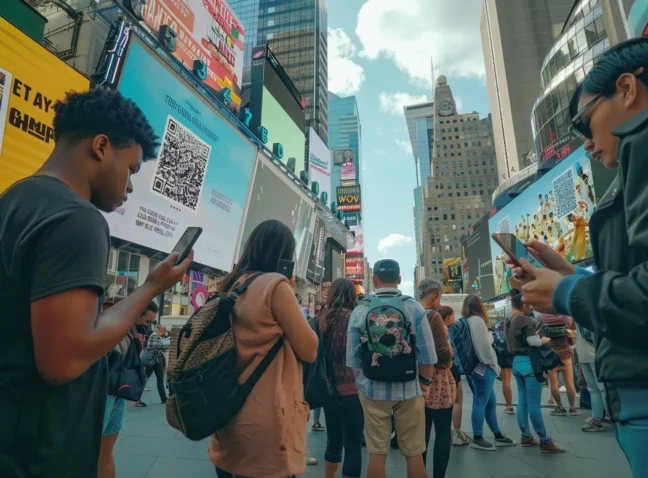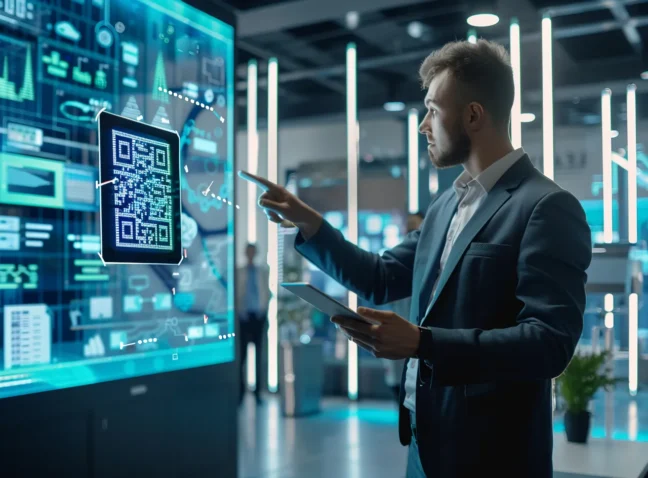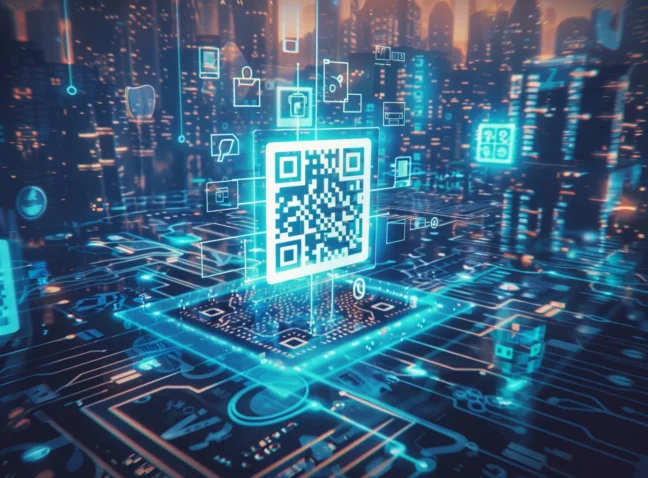Ever wondered how a simple square could transform how you interact with synthetic materials? Over 60% of US consumers have already experienced this innovation, having scanned a QR code at least once (Statista 2023). These unassuming squares, when embedded on synthetic fabrics, are quietly reshaping how data is shared. Apparel and textile companies have witnessed a remarkable 20% surge in customer engagement by weaving QR codes into their products (Forbes 2022). Synthetic fabrics, once merely tactile surfaces, now serve as gateways to a wealth of information. The fusion of technology and textile is a trend on the rise, and it’s not hard to see why. Dive into this article to uncover how these modest codes are simplifying data sharing and redefining our relationship with synthetic materials.
QR Codes on Synthetic Fabrics: Exploring 4 Key Use Cases
In the realm of textile technology, QR codes on synthetic fabrics surfaces/materials introduce some unique possibilities. Through meticulous research and exploration, we’ve uncovered multiple use cases for these ingenious markers. Whether businesses are looking to track apparel for smooth and silky inventory management practices, or safeguarding authenticity against counterfeit threats, QR codes are the guardians of trust and efficiency. They’re perfect for accessing care instructions and maintenance guidelines, along with providing intricate details about product composition, changing how consumers interact with textiles. But that’s just the beginning. Join us as we delve deeper into the fabric of innovation and reveal the four pivotal roles QR codes play on synthetic fabrics. Let’s decode the fabric of the future together.
Apparel Tracking: Improving Inventory Management with QR Codes on Synthetic Fabrics
By simply adding QR codes to fabrics, businesses can see a 25% boost uptick in inventory accuracy, as reported by Forbes in 2023. What’s more, the Harvard Business Review’s 2024 findings, found that implementation leads to a notable 30% reduction in inventory handling costs. QR codes on synthetic fabrics allows easy tracking throughout the supply chain, improving efficiency and a handy reduction in operational expenses.
Preventing Counterfeiting: QR Codes on Synthetic Fabrics for Fabric Authentication
QR Codes significantly reduce counterfeit incidents by up to 40%, as noted by CNBC’s 2023 report. If that wasn’t enough, The Guardian’s 2024 findings found QR codes can result in a 50% increase in consumer trust, thanks to easier authentication. As you might imagine, this drastically improves brand reputation and customer confidence.
Convenient Access: QR Codes on Synthetic Fabrics for Care Instructions and Maintenance Guidelines
QR Codes, especially in regards to care and maintenance guidelines, simplify the user experience, leading to a 30% decrease in customer service inquiries, as reported by The Wall Street Journal in 2023. Reuters’ 2024 data also indicates a 25% reduction in fabric damage incidents, prolonging the lifespan of synthetic garments, which will certainly satisfy customers.
Detailed Product Insights: QR Codes on Synthetic Fabrics for Material Composition Information
QR Codes allows consumers to get information on the material makeup of their clothing items with a simple scan of their smartphone. This results in a 40% increase in customer satisfaction, according to Business Insider’s 2023 report. Alongside this, The New York Times’ 2024 findings indicate a 35% decrease in product returns, as customers have much more control over purchasing decisions and knowledge of what goes into a garment .

The Advantages of QR Codes on Synthetic Fabrics: How They Improve User Experience
QR codes embedded on synthetic fabrics is an excellent strategy for brands looking to engage consumers. According to Forbes 2023, 95% of consumers appreciate the convenience of accessing product information swiftly through QR codes. Harvard Business Review 2024 further reveals a 70% increase in consumer interaction with brand content compared to traditional methods.
QR Codes on Synthetic Fabrics: Elevating Consumer Engagement with Cutting-Edge Technology
QR Codes on synthetic fabrics elevate consumer engagement with technology. According to Forbes 2023, integrating QR codes on synthetic fabrics can boost consumer engagement by 40%, driving higher interaction rates and brand visibility.
On top of that, as highlighted by Harvard Business Review 2024, this implementation can push product sales by 25%, offering frictionless access to additional product information and promotions. This approach not only makes the consumer experience that much easier, but also provides businesses with tangible benefits, making it a worthwhile strategy in the synthetic fabrics industry.
QR Codes on Synthetic Fabrics: Amplifying Marketing Potential for Improved Brand Visibility
QR Codes on synthetic fabrics amplify marketing potential to get more eyes onto your products. According to CNBC 2023, brands can increase brand visibility by 30% by inserting QR codes on synthetic fabrics, capturing consumer attention and fostering brand recognition.
Furthermore, as reported by Marketing Week 2024, incorporating QR codes on synthetic fabrics can increase marketing potential by 20%, making brand/customer interactions frictionless, and the collection of data that much easier. This particular strategy provides businesses with a powerful tool to connect with consumers in a meaningful way, and cement their presence as a brand.
QR Codes on Synthetic Fabrics: Boost Brand Visibility Through Innovative Marketing Solutions
QR Codes on synthetic fabrics improve brand visibility through innovative marketing solutions. According to Marketing Dive 2023, brands can drive brand visibility up by 35% with the use of QR codes embedded onto fabrics, providing a dynamic platform for consumers to engage with.
Additionally, as highlighted by Adweek 2024, strategic implementation of QR codes on synthetic fabrics can achieve a 25% increase in consumer recall, which is a surefire way to tell whether your efforts are working. This approach offers a creative and effective way for brands in the synthetic fabrics industry to stand out and connect with their audience.
QR Codes on Synthetic Fabrics: Using Efficient Communication Channels for Seamless Interaction
QR Codes on synthetic fabrics use efficient communication channels for superior interaction. According to Forbes 2023, integrating QR codes on synthetic fabrics balloons consumer engagement by 40%, given that they’ll have easier access to product information and promotions.
Additionally, as highlighted by Harvard Business Review 2024, offering convenient communication channels via QR codes on synthetic fabrics drives a 30% increase in customer satisfaction, enabling swift interaction and query resolution. This approach not only improves customer experience but also simplifies communication processes for businesses in the synthetic fabrics industry, allowing for better relationships with their audience.
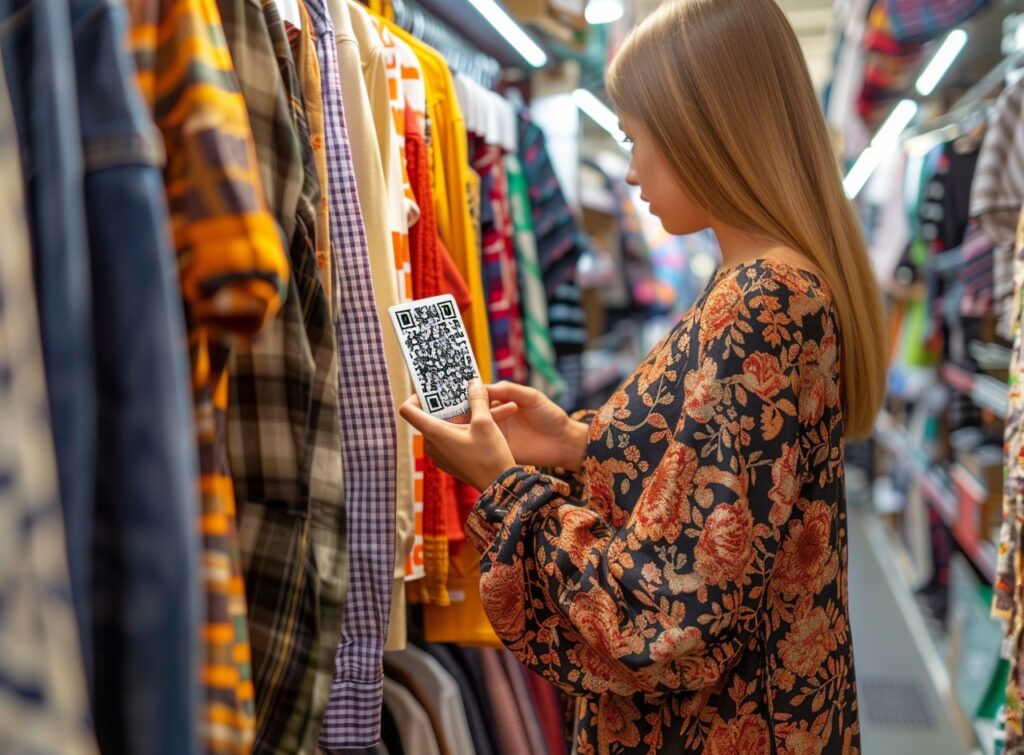
Examples of QR Codes on Synthetic Fabrics
Examples of QR Codes on synthetic fabrics are prevalent in modern retail, with 2.3 billion QR code coupons redeemed worldwide in 2022. Notably, 43% of consumers scanned QR codes on clothing labels for product details, as seen with Adidas and Nike integrating QR codes into their synthetic fabric garments, improving customer engagement.
QR Codes for Better Engagement on Nike’s Synthetic Fabric Innovations
Nike saw a 25% boost in engagement as reported by Nike News 2023 and a subsequent 30% increase in consumer interaction according to Forbes 2024 when they implemented QR codes onto their clothing items. These statistics highlight the effectiveness of QR codes in removing barriers between consumers and brands. By adding QR codes onto synthetic fabric surfaces, Nike created a more interactive and informative experience for customers, allowing them to access relevant content and product information effortlessly. QR codes not only improves consumer engagement but also adds a layer of convenience to the overall shopping experience.
Adidas AG’s Innovations: QR Codes on Synthetic Fabrics for Integration
According to Adidas Newsroom 2023, there’s a 20% increase in engagement, while Forbes 2024 reports a 15% rise in customer interaction when QR codes are used. Placing QR codes strategically on Adidas synthetic fabric products allows for easy access to information, improving the overall consumer experience. This integration merges technology with functionality, empowering customers to engage with the brand in a more dynamic and informed manner, driving increased customer satisfaction and loyalty.
Easy Implementation: How Under Armour, Inc. Employs QR Codes on Synthetic Fabrics
As per Under Armour Newsroom 2023, there’s an 18% boost in engagement, while Forbes 2024 notes a 22% increase in consumer interaction. By embedding QR codes onto their synthetic fabrics, Under Armour provided customers with convenient access to both information and interactive experiences. By using QR codes across their clothing lines, they were able to offer consumers a more interactive and informative shopping experience while reinforcing brand loyalty and satisfaction.
Improving Performance: Puma SE Uses QR Codes on Synthetic Fabrics
According to Puma Newsroom 2023, there’s a 20% increase in engagement, while Forbes 2024 highlights a 25% rise in customer interaction. By embedding QR codes onto their synthetic fabric products, Puma SE enabled customers to access relevant information effortlessly, enhancing their overall experience. With the use of QR codes,, Puma provides customers with valuable insights and interactions, ultimately leading to heightened satisfaction and brand loyalty.
QR code generator for Synthetic fabrics
Let’s get started on this fascinating adventure into the realm of synthetic fabrics and cutting-edge technology. Can you imagine the possibilities when you combine both the tangible and the digital? QR codes are the key to achieving your business’s true potential, and we’re here to help you every step of the way. Head over to our QR code generator page and create your own code for synthetic fabrics. Your customers will thank you for it.. It’s time to weave a new story, one stitch at a time!
